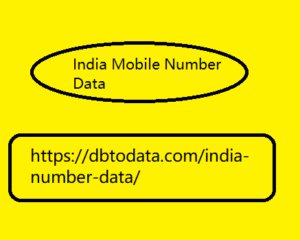Post by account_disabled on Mar 10, 2024 8:10:43 GMT
There are companies that have an idea of a metaverse opposite to that of Mark Zuckerberg, not an occlusive virtual reality, but an augmented reality. The most important supporters are Snap, which already makes extensive use of AR in its filters, Apple and Google, which are designing glasses suitable for this purpose, and Niantic. The company of CEO and founder John Hanke (father of Keyhole, acquired by Google and transformed into Google Earth) is known for the first augmented reality games, Ingress in 2012 and Pokémon Go in 2016. The second, which achieved success with an incredible audience and popularized a new technology, it is estimated to have generated 5 billion in revenues in the first five years.
Afterwards, other less successful games arrived such as the one dedicated to Harry Potter, some India Mobile Number Data flops and the new Pikmin Bloom, where the objective is to grow floral creatures, the Pikmin, simply by walking as much as possible. But Niantic is not a company that simply makes games, albeit innovative ones. It is more interested in using the geolocalized data produced by players for a more ambitious purpose: “building the real world metaverse”, building the metaverse for the masses, a metaverse on a human scale. Not a synthetic world in which to take refuge, but a world richer than the one around us. As a society, we can hope that the world doesn't regress into the kind of place that pushes science fiction heroes to find refuge in a virtual one – or we can work to make sure that doesn't happen. At Niantic, we chose the second path. We believe we can use technology to embrace the “realness” of augmented reality – encouraging everyone, including ourselves, to get up, get out and connect with people and the world around them.

This is what we humans were born to do, the result of two million years of evolution and as a result these are the things that make us happiest. Technology should be used to enhance these fundamental human experiences, not replace them. John Hanke Lightship: the 3D world for augmented reality A concrete step towards this augmented universe is the creation of Lightship , a Software Development Kit that allows developers to use Niantic technologies, for example those that allow the camera of a smartphone to identify places, surfaces, depths and therefore placing digital objects in the physical world. The main function of this SDK is called VPS or Visual Positioning System, a sort of more advanced visual GPS.
Afterwards, other less successful games arrived such as the one dedicated to Harry Potter, some India Mobile Number Data flops and the new Pikmin Bloom, where the objective is to grow floral creatures, the Pikmin, simply by walking as much as possible. But Niantic is not a company that simply makes games, albeit innovative ones. It is more interested in using the geolocalized data produced by players for a more ambitious purpose: “building the real world metaverse”, building the metaverse for the masses, a metaverse on a human scale. Not a synthetic world in which to take refuge, but a world richer than the one around us. As a society, we can hope that the world doesn't regress into the kind of place that pushes science fiction heroes to find refuge in a virtual one – or we can work to make sure that doesn't happen. At Niantic, we chose the second path. We believe we can use technology to embrace the “realness” of augmented reality – encouraging everyone, including ourselves, to get up, get out and connect with people and the world around them.

This is what we humans were born to do, the result of two million years of evolution and as a result these are the things that make us happiest. Technology should be used to enhance these fundamental human experiences, not replace them. John Hanke Lightship: the 3D world for augmented reality A concrete step towards this augmented universe is the creation of Lightship , a Software Development Kit that allows developers to use Niantic technologies, for example those that allow the camera of a smartphone to identify places, surfaces, depths and therefore placing digital objects in the physical world. The main function of this SDK is called VPS or Visual Positioning System, a sort of more advanced visual GPS.
